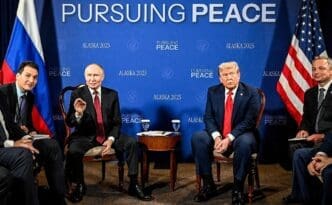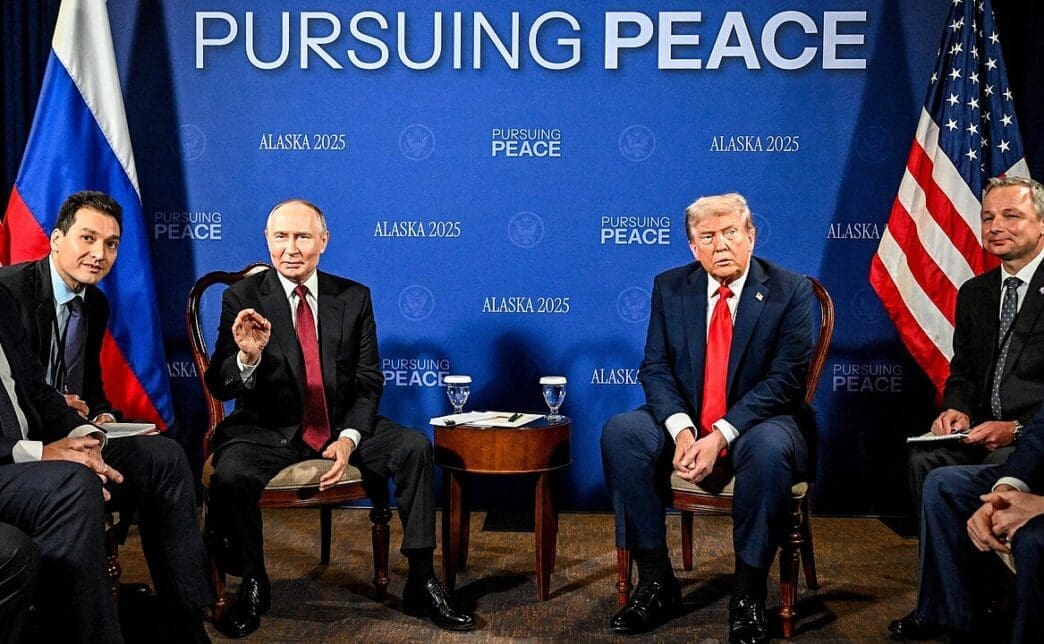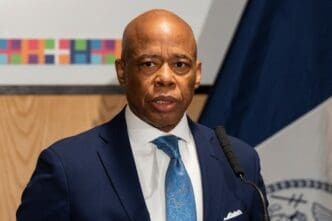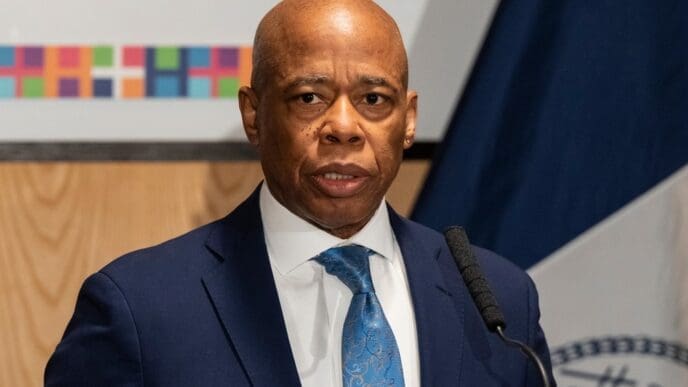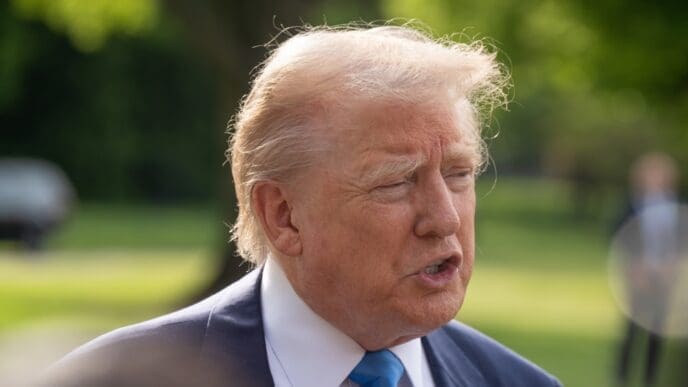Executive Summary
- The summit between President Donald Trump and President Vladimir Putin did not yield a quick peace agreement, potentially providing Russia with crucial time to pursue military objectives in Ukraine before seasonal weather changes.
- A significant shift post-summit was the apparent evaporation of the demand for a ceasefire, with the focus shifting to a “quick, enduring peace deal,” which President Trump reportedly urged President Zelensky to consider based on President Putin’s unfavorable proposal.
- The article characterizes President Putin as a “studied, patient pragmatist” who aims for “peace” that effectively means Ukraine’s surrender, suggesting the time consumed by diplomatic maneuvering could allow Russia to achieve significant battlefield changes.
The Story So Far
- Russia is actively pursuing military objectives in Ukraine, aiming for battlefield gains before seasonal weather changes.
- President Putin has consistently opposed a ceasefire, preferring to continue military advances and seeking a “peace” that effectively means Ukraine’s surrender, including control of the entire Donbas region.
- Ukrainian officials have previously rejected demands for territorial concessions, viewing them as politically and practically impossible.
Why This Matters
- The shift in diplomatic focus from an immediate ceasefire to a “quick, enduring peace deal” following the summit could provide Russia with crucial time to pursue its military objectives in Ukraine before colder weather and softening ground complicate operations.
- President Trump’s perceived backing away from threatened secondary sanctions on Russian oil and gas may have eased immediate economic pressure on Moscow, potentially allowing Russia to sustain its military efforts.
- The reported proposal from President Putin, which includes demands for control of the entire Donbas region, and President Trump’s urging for President Zelensky to consider it, could place significant pressure on Ukraine to make unfavorable territorial concessions or face prolonged conflict.
Who Thinks What?
- President Putin and Russia are seen as having gained crucial time from the summit to pursue military objectives in Ukraine before winter, with the diplomatic shift away from an immediate ceasefire allowing for continued advances and a perceived easing of immediate economic pressure.
- President Trump, following the summit, reportedly shifted the diplomatic focus from an immediate ceasefire to pursuing a “quick, enduring peace deal” and urged President Zelensky to consider a Russian proposal that included demands for control of the entire Donbas region.
- Ukrainian officials and European leaders, who had previously demanded a ceasefire, view Russia’s proposed demands as politically and practically impossible to concede and are concerned that the time consumed by diplomatic maneuvering could allow Russia to achieve significant battlefield changes.
The recent summit between President Donald Trump and President Vladimir Putin in Alaska, while not yielding a quick peace agreement, has been analyzed by some as potentially providing Russia with crucial time to pursue its military objectives in Ukraine. The meeting, which took place amidst ongoing conflict, saw a shift in diplomatic focus away from an immediate ceasefire, a development that could allow Russian forces to continue their advances before seasonal weather changes complicate operations.
Summit Outcomes and Battlefield Implications
The analysis suggests that Russia’s military success on the front lines could be measured in weeks, with a critical window until mid-October when colder weather and softening ground could hinder advances. The article posits that President Trump’s perceived backing away from threatened secondary sanctions on Russian oil and gas, though not halting the war this year, may have eased immediate economic pressure on Moscow, despite calls from leaders in India and China.
Despite a cordial welcome for President Putin, including applause and a ride in the Beast, the summit concluded without a comprehensive peace deal. The article notes President Trump’s visibly pained expression, contrasting with positive claims from Russian and American staff about the meeting’s success. It suggests that while no immediate “madcap” deal emerged, the interaction highlighted Putin’s perceived intransigence.
Diplomatic Shifts and Proposals
A significant shift observed post-summit was the apparent evaporation of the demand for a ceasefire, which had previously been a bedrock of European and Ukrainian diplomatic positions. President Putin has consistently opposed a ceasefire, as it would halt his military advances. The focus instead shifted to pursuing a “quick, enduring peace deal,” a concept the article suggests could take weeks or longer to formulate.
The article indicates that President Putin presented a deal that appears unfavorable to Ukraine, reportedly including demands for control of the entire Donbas region. President Trump, according to the analysis, urged President Zelensky to consider this proposal. Ukrainian officials have previously rejected such demands, viewing them as politically and practically impossible to concede.
Strategic Considerations and Future Engagements
President Putin is characterized as a “studied, patient pragmatist” who can secure partial gains and return for more later, unconstrained by electoral cycles. His post-talks remarks reiterated his focus on the “root causes” of the conflict, which have historically included Ukraine’s sovereignty and NATO’s eastward expansion. The article suggests he seeks “peace” that effectively means Ukraine’s surrender.
President Trump’s upcoming meeting with President Zelensky in the Oval Office is anticipated to reveal an evolution in their relationship and Trump’s perspective on Putin. While Kyiv may have the support of European leaders lobbying President Trump, the article warns that the time consumed by diplomatic maneuvering could be precisely what President Putin needs to achieve significant battlefield changes.
The diplomatic exchanges surrounding the Alaska summit, particularly the perceived shift in emphasis from a ceasefire to a long-term peace deal, underscore the complex dynamics of the ongoing conflict. For Russia, time is presented as a crucial factor for military consolidation, while for Ukraine and its European allies, the urgency of the battlefield remains paramount amidst the ongoing diplomatic process.

